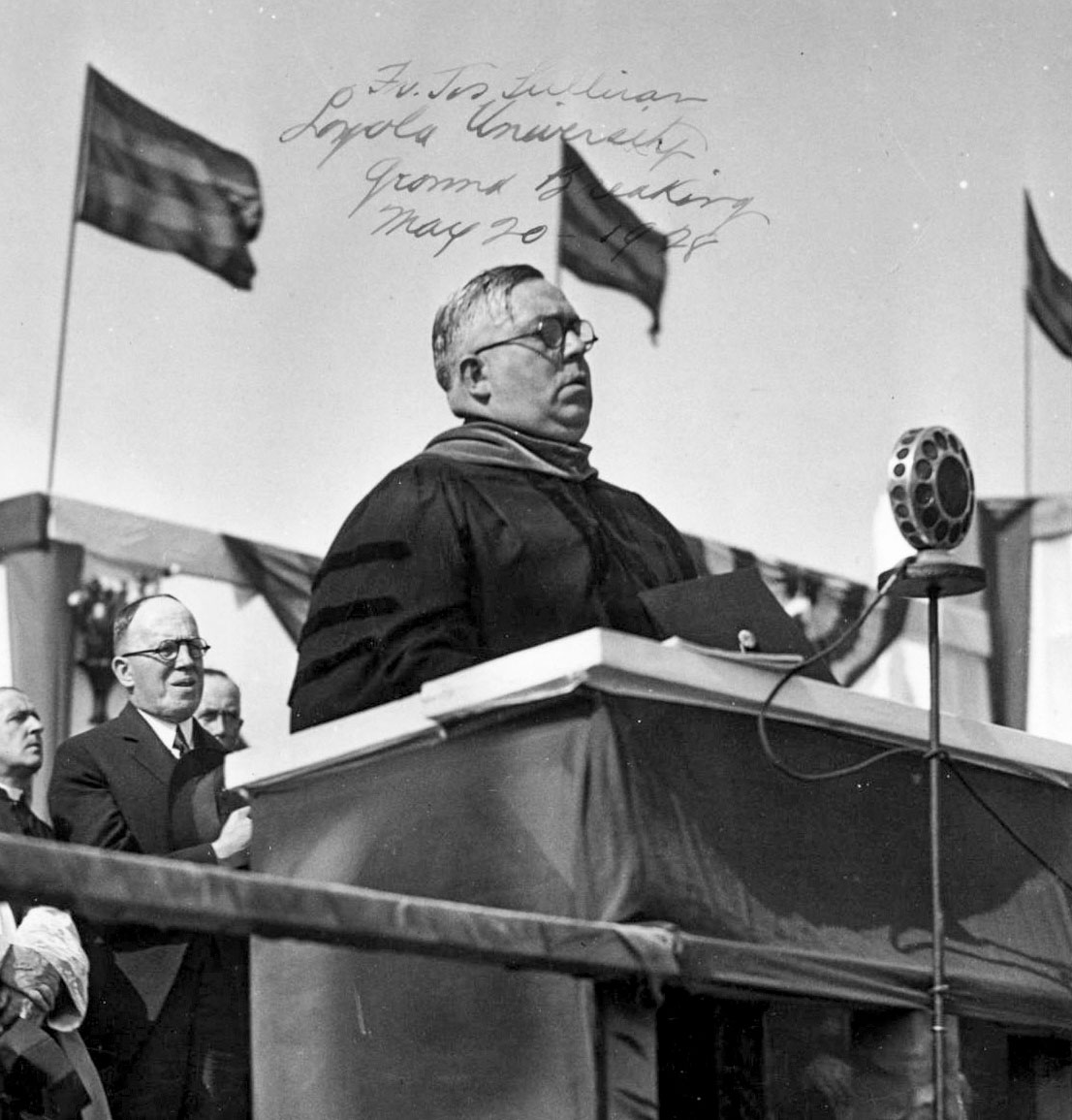
Joseph Sullivan, S.J., received Harry Culver’s now-famous telegram offering 100 acres on Oct. 19, 1927: Build two university buildings in two years, and the land is free, Culver promised. Great gift, but huge risk: campus construction might cost $5 million. Neither L.A.’s Bishop John Cantwell nor the Jesuits could finance it. And Loyola’s then-Venice Blvd. campus was already in debt. Even worse, the promised land came with no sewers, streetlights, sidewalks, electricity or paved roads.
Sullivan’s challenge? To sell the future — to the bishop, to Joseph Piet, S.J., his provincial, and to Catholics and non-Catholics across Hollywood and Los Angeles who could fund his vision. Kevin Starr, in his “Loyola Marymount University: 1911-2011, A Centennial History,” says Sullivan, a “developer, a dreamer, a visionary,” was bluffing. But Los Angeles, which doubled in size in the ’20s, was already a city built on promises, where “bluffing on behalf of the future was an art form.”
A day after receiving Culver’s telegram, Sullivan told Piet the bishop was elated by the news. Within a week, Sullivan was negotiating the deed, even though Piet’s letter of approval was still two weeks away. And in May 1928, Sullivan staged an elaborate groundbreaking ceremony, with no formal construction plan in place — it was a massive, and successful, photo op.
After two years of battling skepticism and opposition, Sullivan’s dream was made concrete: Buildings rose on the Del Rey Hills. Eight decades later, Silicon Beach CEOs followed Sullivan’s lead.
